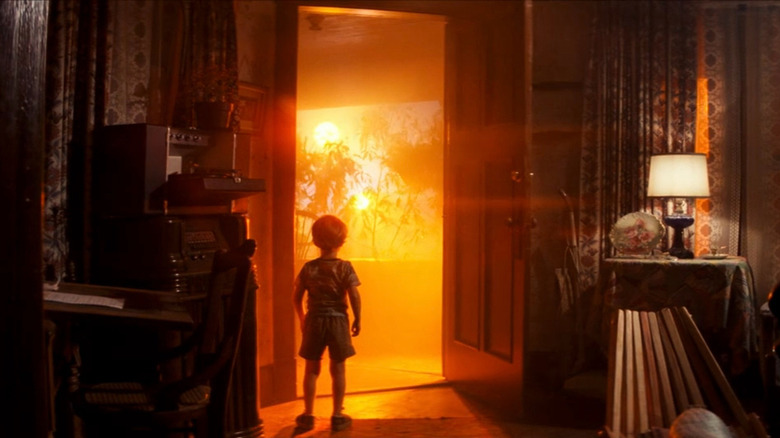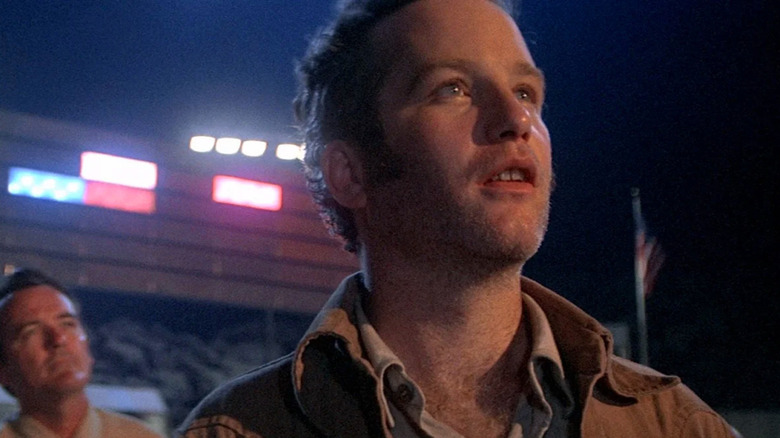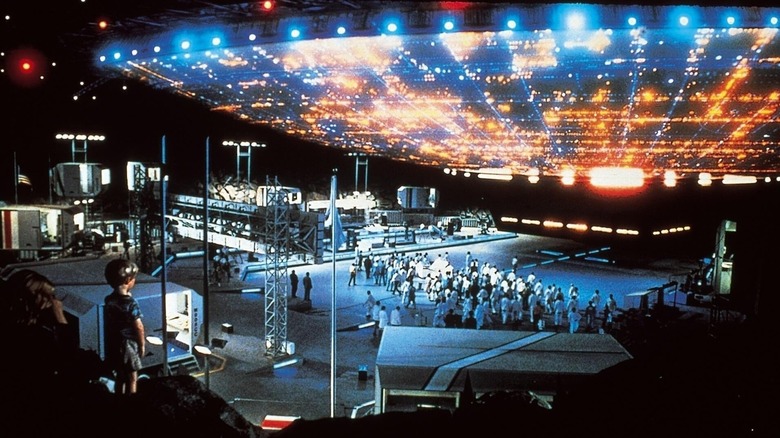
The pre-digital age of blockbuster filmmaking was a wonderland of handmade awe. Every astounding image you saw on a movie screen was tactile. Be it a mechanical shark, a model Ferris wheel rolling down the Santa Monica Pier, or a flying saucer crashing into the United States Capitol, you knew these were tangible creations placed in front of a camera. Though great filmmakers know how to dazzle us with the ones and zeroes of CGI, I far prefer the rough magic practiced by masters like Ray Harryhausen, Douglas Trumbull, and John Dykstra.
The practical visual effects revolution kicked off with Stanley Kubrick's "2001: A Space Odyssey," which flaunted mind-blowing outer space imagery from the legendary Trumbull. The next major leap came in 1977 when Dykstra invented motion control technology to thrust viewers into the nerve-frazzling trench run during the finale of "Star Wars." While moviegoers kept lining up to revisit that galaxy far, far away, Steven Spielberg, who'd suddenly found himself in friendly blockbuster competition with George Lucas, was putting the finishing touches on "Close Encounters of the Third Kind," an earthbound sci-fi yarn looking to push the optical effects envelope via Trumbull's assistance.
It was an arms race of spectacle spurred by two genius filmmakers hellbent on out-wowing each other. In doing so, they occasionally conceived of eye-popping sequences with little to no idea of how to execute them. One of these scenes proved impossible for Spielberg and Trumbull to pull off.
The Trouble With Cuboids

It's possible that a malfunctioning mechanical shark was the best thing that ever happened to Spielberg's filmmaking career. By having to gradually generate suspense via an unseen menace, the director learned the importance of the delayed reveal. "Close Encounters of the Third Kind" hooks the audience with bizarre occurrences: planes lost during World War II turn up intact, sans pilots, in the Sonoran Desert; a ship believed to have sunk off the coast of Jacksonville, Florida, is discovered in the Gobi Desert; air traffic controllers in Indianapolis witness an inexplicable near miss with an unidentified aircraft.
Spielberg gives us a taste of the light show to come when Richard Dreyfuss' Roy Neary comes into contact with an otherworldly spacecraft (and the abduction of little Barry Guiler), but he holds off on the good stuff until the spellbinding final half hour. Though Spielberg, Trumbull, and Roy Arbogast more than deliver the mesmerizing goods, there was one very close encounter that couldn't be achieved in the pre-digital era.
The scene in question involved "cuboids," which are described in Michael Klastorin's "Close Encounters: The Ultimate Visual History" as "dozens and dozens of illuminated cubes that were dispersed by the three scout ships at the landing strip." They're basically puckish entities that buzz around the technicians at Devil's Tower, seeking out cameras and posing for pictures. Eventually, according to Spielberg's screenplay, they would "burst into 'galactic golden dust that races in all directions' and envelop the assembled spectators. One of these particles bores painlessly into Neary's hand, coursing brightly around his veins until it burns out.
What went wrong? Just about everything.
Electrifying Is Good, Electrocution Not So Much

According to Arbogast, the cuboids were plastic boxes loaded with high-intensity light bulbs. The boxes had to be rigged to wires, which introduced the potentially fatal risk of electrocution. "We were given strict instructions not to touch the cuboids," said co-star Bob Balaban, "because each of them had like twelve million volts of electricity, and we would have been electrocuted."
Arbogast and his crew eventually achieved the desired visual effect, but Spielberg was up against the era's technical limitations. As he told Klastorin:
"'We didn't know how to do it,' admits Spielberg. 'We tried it. We put them on wires. The problem was, the cuboids were like little Chinese lanterns. Very small, but they lit the wires that they were traveling down, and this was the analog era of film, before digital wire removal was invented. It was an effect that I thought would work, but wound up, on a day of practical production, not working at all.'"
"Close Encounters of the Third Kind" is a film of ineffable beauty that concludes with an incorrigible dreamer leaving his wife and kids to explore the galaxy. Spielberg was unmarried at the time and stranded his protagonist with two children who'd rather play miniature golf than see Walt Disney's "Pinocchio." Why he has nothing in common with his family is never really investigated. All we know is that he answers to a higher calling, which is curiosity. It's an angry and selfish decision, but these are essential components of being an artist. It isn't right or wrong, it just is.
Read this next: 12 Best Performances In Steven Spielberg Movies
The post Close Encounters Of The Third Kind's Script Featured A Scene Even Steven Spielberg Couldn't Pull Off appeared first on /Film.
0 Commentaires